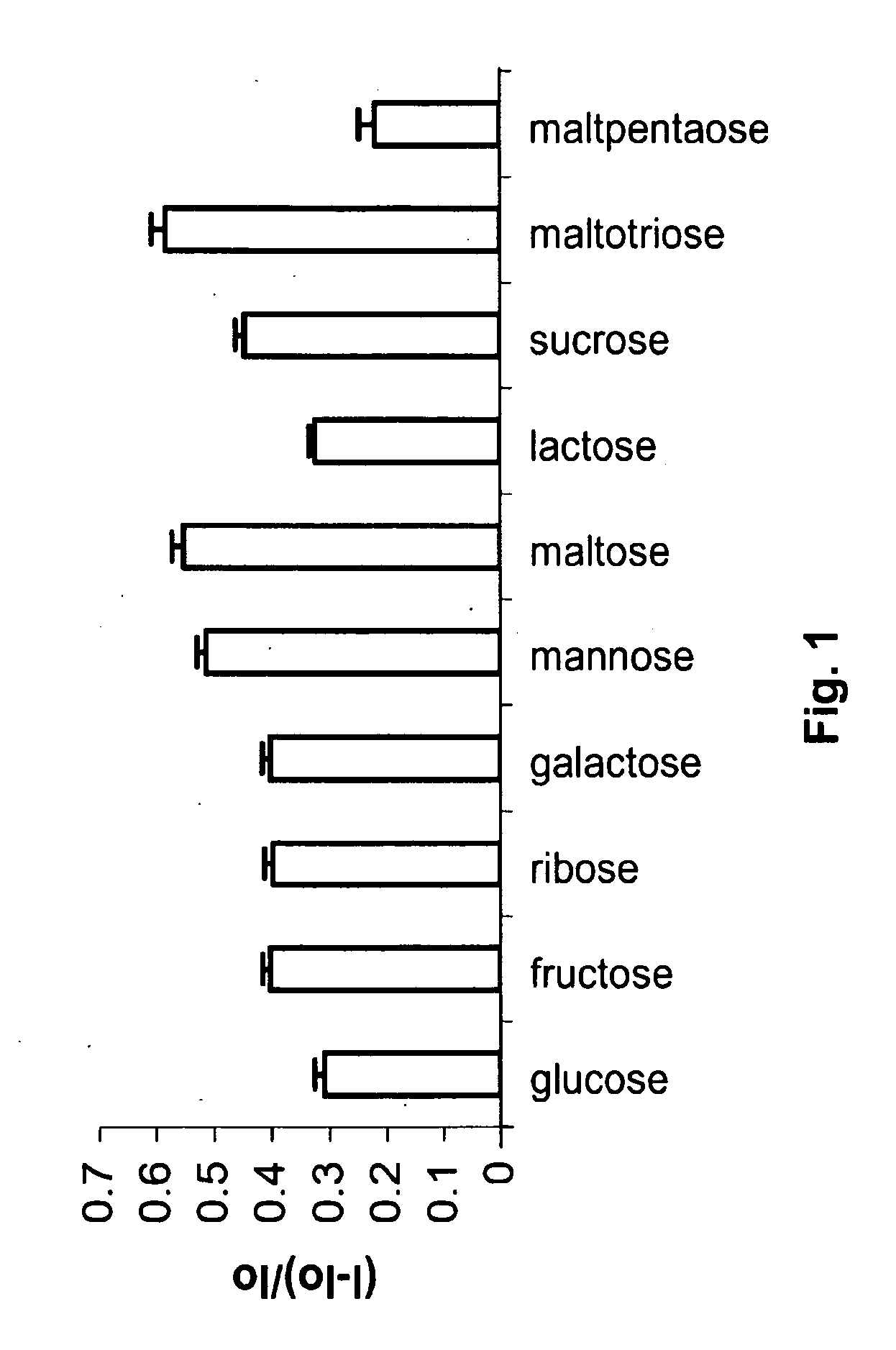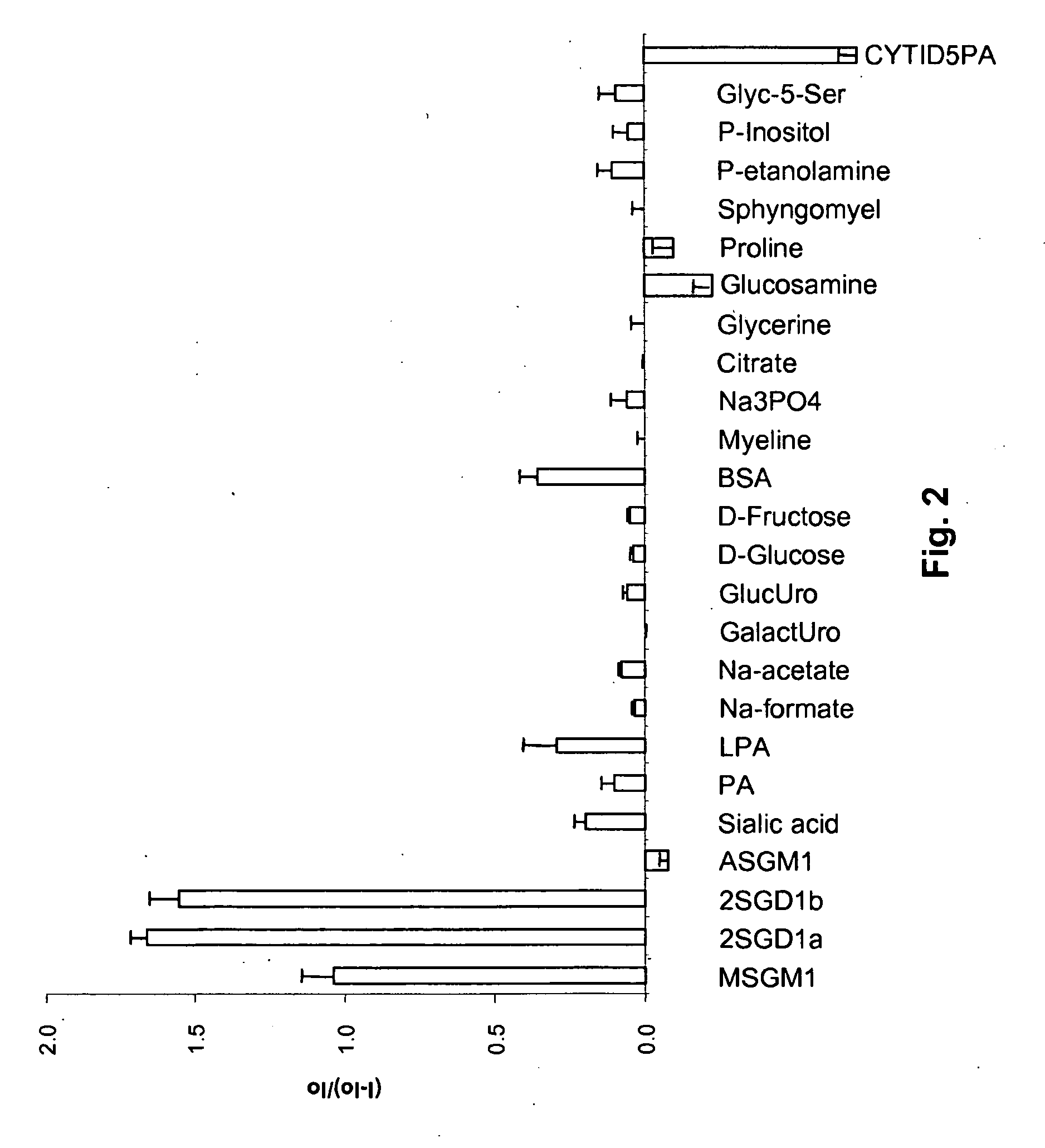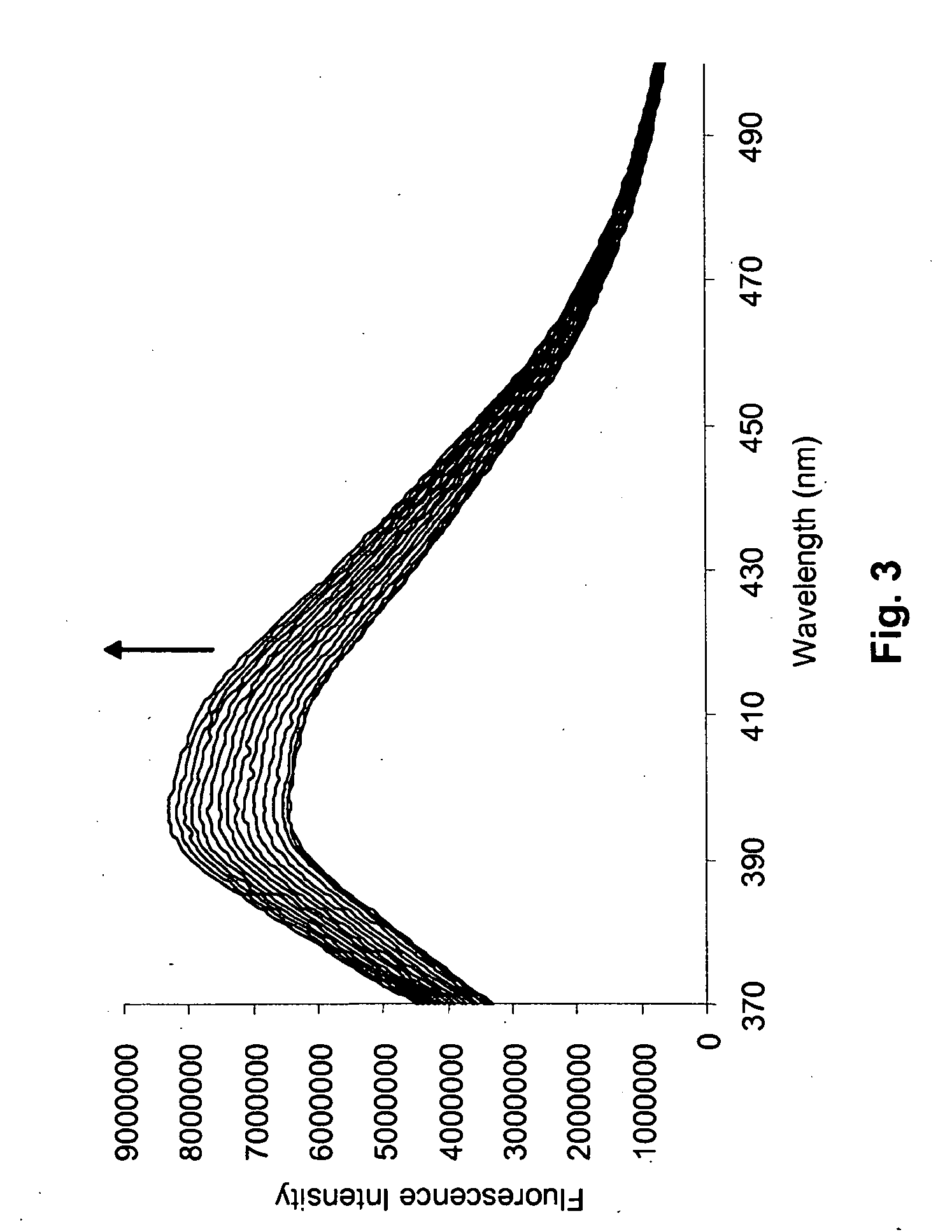Lanthanide Complexes as Fluorescent Indicators for Neutral Sugars and Cancer Diagnosis
a technology of neutral sugars and complexes, applied in the field of detection of neutral sugars and cancer diagnosis, can solve the problems of lowering the accuracy of the assay, reducing the amount of material available, and no existing methods for detecting sialic acid that are well-suited for clinical diagnosis, etc., and achieves enhanced fluorescence emission, reduced ionic radius, and higher affinity for anionic substrates
- Summary
- Abstract
- Description
- Claims
- Application Information
AI Technical Summary
Benefits of technology
Problems solved by technology
Method used
Image
Examples
example 1
[0047]Materials and Instrumentation. All reagents were purchased from Sigma-Aldrich, unless otherwise noted. Gangliosides were purchased from Calbiochem. Phospholipids were purchased from Avanti Polar Lipids. All reagents were used as purchased, without further purification, unless otherwise noted. Fluorescence spectra were recorded with a SPEX Fluorolog-3 spectrofluorimeter equipped with double excitation and emission monochromators, and a 400 W Xe lamp. 1H and 13C NMR spectra were measured on a Bruker DPX-250 or DPX-300 spectrometer. All δ values are reported in ppm. Coupling constants are reported in Hz. Fourier-Transform Infrared spectra were measured on a Tensor 27 Infrared Spectrophotometer (Bruker Optics Inc.). Mass spectra were acquired on a Bruker ProFLEX III MALDI-TOF mass spectrometer.
example 2
[0048]Saccharide detection. Solutions of the saccharides, 1.1×10−3 M each, were prepared in HEPES buffer (0.1 M, pH 7.0). To the buffer solutions containing saccharides, Compound 1 was added to a final concentration of 5.53×10−6 M. Control solutions were prepared with only the HEPES buffer and Compound 1 at the same concentrations. All samples were incubated for 10 min at room temperature before fluorescence was measured.
examples 3 and 4
[0049]Syntheses of Compounds 1 and 2. The syntheses of Compounds 1 and 2 are depicted schematically in FIG. 17, and are described in greater detail below. Compounds 3, 4, 5, and 6 were reported in S. Duggan et al., J. Org. Chem., vol. 66, pp. 4419 ff (2001), while Compounds 1 and 2 are believed to be novel. In addition, each step of the synthesis shown in FIG. 17 is believed to be novel.
PUM
| Property | Measurement | Unit |
|---|---|---|
| atomic number | aaaaa | aaaaa |
| emission wavelength | aaaaa | aaaaa |
| concentration | aaaaa | aaaaa |
Abstract
Description
Claims
Application Information
 Login to View More
Login to View More - R&D
- Intellectual Property
- Life Sciences
- Materials
- Tech Scout
- Unparalleled Data Quality
- Higher Quality Content
- 60% Fewer Hallucinations
Browse by: Latest US Patents, China's latest patents, Technical Efficacy Thesaurus, Application Domain, Technology Topic, Popular Technical Reports.
© 2025 PatSnap. All rights reserved.Legal|Privacy policy|Modern Slavery Act Transparency Statement|Sitemap|About US| Contact US: help@patsnap.com



